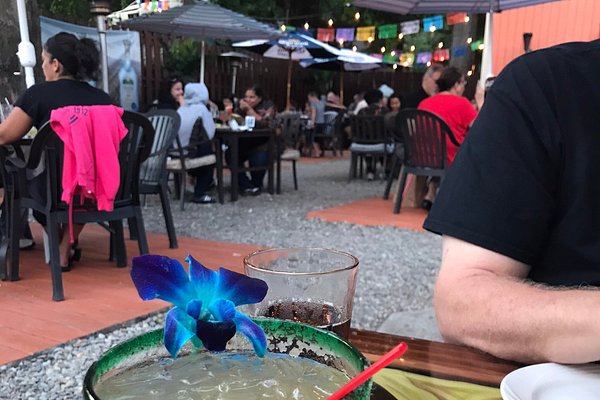Where to find the best-tasting restaurants Lockhart in this year.
Why Dining at Local Restaurants Sustains Your Community and Thrills Your Taste Buds
Eating at regional dining establishments uses greater than simply a meal; it works as an essential component in nurturing area vitality and financial durability. By patronizing these facilities, individuals not just delight in diverse cooking experiences however also add to local task creation and the assistance of regional farmers. This cooperative relationship promotes an abundant tapestry of flavors that shows regional society and heritage. Yet, the implications of such selections extend much beyond the plate, inviting us to think about just how our dining habits form the areas we populate. What might this imply for the future of neighborhood eating and area connection?
Economic Impact of Local Dining

The economic effect of regional dining prolongs much past the dining establishment itself, affecting a large range of sectors within the community. Neighborhood dining establishments play a critical duty in stimulating economic growth by creating tasks, supporting neighborhood providers, and adding to municipal incomes. When customers pick to eat at regional establishments, they aid receive work for cooks, web servers, and upkeep team, therefore improving the regional job market.
Furthermore, local restaurants frequently source active ingredients from neighboring ranches and producers, fostering a durable supply chain that profits different agricultural fields. This technique not only supports neighborhood economies but additionally motivates sustainable farming techniques. Furthermore, the sales tax created from these dining establishments contributes to important civil services, such as education and learning and facilities, which further boosts neighborhood lifestyle.
In addition, regional dining facilities typically foster a feeling of community, drawing in residents and site visitors alike, which can lead to raised foot web traffic in bordering companies. This interconnectivity amongst regional enterprises improves financial resilience, developing a dynamic and lasting community ecological community. In essence, the assistance of local eating is an investment in the more comprehensive economic health and wellness of the location, promoting growth and sustainability for future generations.
Special Culinary Experiences

Furthermore, many regional facilities accept farm-to-table techniques, emphasizing the value of seasonal fruit and vegetables. Diners can relish the quality of ingredients sourced from close-by ranches, which not only improves taste but likewise cultivates a link to the local landscape. This commitment to high quality and locality sets the phase for distinct cooking experiences that are typically lacking in chain restaurants.
Moreover, regional chefs regularly experiment with fusion cuisine, blending diverse culinary traditions to create exciting new dishes. Such advancement not only tantalizes the palate but also motivates adventurous dining, inviting clients to broaden their culinary perspectives. Involving with neighborhood dining establishments allows restaurants to delight in meals that are not nearly nourishment, yet about the artistry and interest that specify the culinary world, making every eating experience genuinely special and wonderful.
Strengthening Area Bonds
Eating at regional restaurants plays a crucial duty in enhancing community bonds by cultivating connections amongst homeowners. These facilities offer as important gathering areas where individuals can engage in purposeful conversations, share experiences, and create lasting memories. As clients constant the same local places, they cultivate a feeling of experience and camaraderie, enhancing social ties within the area.
In addition, regional restaurants commonly reflect the one-of-a-kind cultural textile of their communities, showcasing local traditions and cooking heritage. This celebration of neighborhood culture not just enhances neighborhood identification however additionally encourages homeowners to take pride in their environments. By participating in the regional eating scene, individuals add to a common narrative that binds them with each other.
Community occasions organized at restaurants, such as open mic evenings, charity events, or food celebrations, better improve these links. They supply opportunities for partnership and involvement among diverse teams, fostering inclusivity and understanding. As citizens gather to sustain local services, they concurrently support one another, producing an interconnected network that enhances the neighborhood's durability.
Essentially, eating at local restaurants is not simply concerning food; it is an enriching experience that fortifies neighborhood bonds and cultivates a lively, united neighborhood society.
Sustaining Regional Farmers and Manufacturers

This method lowers transport costs and emissions, promoting environmental sustainability while likewise boosting the taste and top quality of the recipes served. Seasonal menus, which highlight local produce, enable dining establishments to use one-of-a-kind culinary experiences that reflect the region's farming bounty.
Additionally, sustaining neighborhood farmers helps preserve conventional farming methods and motivates biodiversity. It equips small manufacturers, permitting them to flourish in a significantly industrialized food system. As neighborhood dining establishments select to companion with these farmers, they assist preserve a dynamic agricultural community, guaranteeing that regional food systems stay resilient.
Basically, dining at local restaurants is not just concerning enjoying a dish; it is a financial investment Get More Info in the regional economic climate and an affirmation of sustainable practices. By picking neighborhood, restaurants play a necessary function in nurturing their areas and sustaining the dedicated individuals that cultivate their food.
Preserving Neighborhood Society and Heritage
Rooted in the traditions of their areas, Going Here regional restaurants function as crucial custodians of cultural heritage. By showcasing local components and conventional food preparation techniques, these establishments maintain the distinct tastes and culinary techniques that specify local identification. Each meal tells a tale, reflecting historic influences and social narratives that have formed the community over generations.
Moreover, regional restaurants commonly champion classic recipes gave through family members, making sure that unique social practices stay alive. This not just enlightens customers concerning the neighborhood's heritage but likewise promotes a feeling of pride and belonging amongst locals. The ambience, decoration, and also music in these facilities commonly echo the regional society, providing an all natural experience that transcends simple eating.
Furthermore, regional dining establishments add to the preservation of language and languages, as menus and conversations often integrate local vernacular. By taking part in neighborhood events and celebrations, these dining establishments enhance social bonds and promote cultural exchange. Essentially, eating at neighborhood dining establishments is not merely a culinary experience; it is a chance to engage with and support the abundant tapestry of regional society and heritage, guaranteeing its connection for future generations.
Verdict
